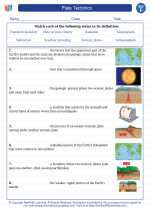Plate Tectonics
Plate tectonics is the scientific theory that describes the large-scale motions of Earth's lithosphere. The lithosphere is divided into several large and small tectonic plates that move over the semi-fluid asthenosphere beneath them. This movement is responsible for various geological phenomena such as earthquakes, volcanic activity, and the formation of mountain ranges.
Key Concepts
- Tectonic Plates: These are large and small pieces of the Earth's lithosphere that move and interact with each other. The major tectonic plates include the Pacific Plate, North American Plate, Eurasian Plate, African Plate, South American Plate, Antarctic Plate, and Indo-Australian Plate.
- Plate Boundaries: These are the regions where tectonic plates meet and interact. There are three main types of plate boundaries: divergent boundaries, convergent boundaries, and transform boundaries.
- Geological Features: Plate tectonics is responsible for the formation of various geological features such as mountains, ocean trenches, volcanic arcs, and mid-ocean ridges.
- Earthquakes and Volcanoes: The movement and interaction of tectonic plates result in seismic activity and volcanic eruptions along the plate boundaries.
Study Guide
To understand plate tectonics, it's important to grasp the following key points:
- What are tectonic plates and how do they move?
- What are the different types of plate boundaries and what geological features are associated with each type?
- How do earthquakes and volcanic eruptions relate to plate tectonics?
- What evidence supports the theory of plate tectonics?
Studying maps of tectonic plate boundaries, watching animations of plate movements, and examining geological cross-sections can all help in visualizing the concepts related to plate tectonics.
Understanding plate tectonics is crucial for understanding the Earth's dynamic processes and the distribution of geological hazards. It provides a framework for explaining major geological events and shaping the Earth's surface over millions of years.
[Plate Tectonics] Related Worksheets and Study Guides:
.◂Science Worksheets and Study Guides Sixth Grade. Plate Tectonics

 Worksheet/Answer key
Worksheet/Answer key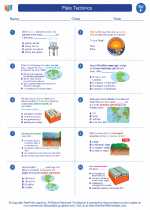
 Worksheet/Answer key
Worksheet/Answer key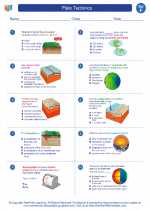
 Vocabulary/Answer key
Vocabulary/Answer key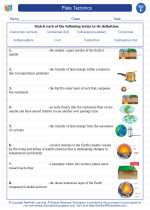
 Vocabulary/Answer key
Vocabulary/Answer key
 Vocabulary/Answer key
Vocabulary/Answer key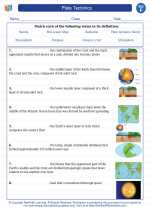
 Vocabulary/Answer key
Vocabulary/Answer key